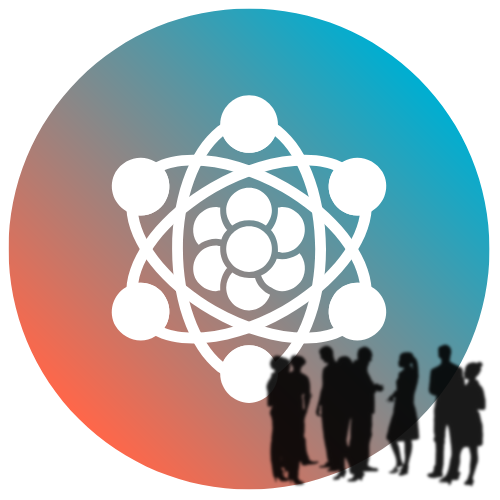VoIP once disrupted traditional telephony. Now, it’s being disrupted itself—by artificial intelligence on one side and increasingly sophisticated security demands on the other. As business communications move deeper into the cloud, voice data isn’t just traveling across networks; it’s being processed, analyzed, and often automated. The same systems that empower teams to work smarter also widen the attack surface. Understanding how AI and security intersect in the VoIP ecosystem is quickly becoming a strategic requirement, not a technical footnote.
The rise of intelligent voice
VoIP’s appeal has always been its ability to move voice into the data layer. But today, that’s only the foundation. Modern platforms embed AI at nearly every layer of interaction.
1. Voice analytics and transcription
Real-time transcription, sentiment analysis, and keyword spotting have become table stakes in enterprise VoIP. Businesses use these insights to measure customer satisfaction, track compliance, and improve sales or service scripts. What used to require human monitoring now happens automatically and at scale.
2. Smart routing and agent assistance
AI-powered call routing evaluates caller intent, historical data, and even tone of voice to direct calls to the right person or department. Meanwhile, virtual agents and AI copilots suggest responses, summarize calls, or trigger workflows in connected CRMs. A sales rep can finish a conversation and have the follow-up email already drafted before the call ends.
3. Predictive maintenance and performance optimization
By continuously analyzing call-quality metrics, AI can predict bandwidth issues, jitter spikes, or failing endpoints before users notice. This proactive layer turns network management from reactive troubleshooting into predictive care.
The parallel rise of risk
All that intelligence creates value—and vulnerability. The shift from analog lines to software-driven communication means every voice packet is now potential data to protect.
1. Expanded attack surfaces
Each connected endpoint, API integration, and softphone app widens the entry points for bad actors. SIP (Session Initiation Protocol) traffic can be spoofed, flooded, or hijacked. Attackers exploit weak authentication to initiate fraudulent calls, rack up toll charges, or intercept data in transit.
2. Privacy and compliance pressures
With AI analyzing voice data, compliance frameworks like GDPR, HIPAA, and CCPA take center stage. Voice recordings can contain sensitive personal or financial information; improper storage or processing can lead to serious penalties. Encryption at rest and in transit, data-minimization policies, and transparent consent practices are essential guardrails.
3. Social engineering and voice spoofing
Deepfake audio is no longer science fiction. Malicious actors can clone a CEO’s voice to authorize fraudulent transactions or manipulate employees. Businesses are responding by combining multi-factor authentication with voice biometrics and anomaly detection systems that flag unusual patterns in call behavior.
Building security and AI in tandem
Organizations that treat AI and security as separate silos miss the point. The best VoIP systems weave them together.
- Adaptive authentication: AI continuously assesses risk—location, device, time of day—and adjusts authentication steps dynamically.
- Real-time threat detection: Machine-learning models trained on call metadata spot anomalies faster than traditional monitoring.
- Context-aware encryption: Systems can escalate encryption levels for sensitive calls automatically, reducing overhead without sacrificing protection.
- Continuous compliance: Automated audits track retention policies and deletion timelines, proving adherence to privacy laws.
These aren’t futuristic concepts; they’re already appearing in enterprise-grade VoIP offerings from major UCaaS providers.
Practical steps for business buyers
If you’re evaluating or selling VoIP solutions, here’s what matters most in this next chapter:
- Demand transparency – Understand where voice data is stored, who has access, and how AI models are trained. Vendors should disclose whether they use your data for model improvement.
- Ask about STIR/SHAKEN compliance – This framework authenticates caller identity and reduces spoofing, crucial for outbound-heavy businesses.
- Check for open APIs with security controls – Integration power is meaningless if it introduces vulnerabilities. Review permission scopes and rate-limiting.
- Balance automation with oversight – AI summaries and call analytics can streamline operations, but human review still ensures accuracy and ethics.
- Invest in user education – Most breaches begin with human error. Training employees to recognize social-engineering tactics remains the cheapest form of security.
The horizon ahead
The VoIP industry sits at a crossroads of intelligence and integrity. AI is turning voice data into actionable insight; simultaneously, that insight becomes an asset worth defending. The winners will be providers—and business customers—who treat security as an innovation layer, not an obstacle.
In the coming years, expect your “phone system” to feel less like a line and more like a living network: self-healing, context-aware, and deeply integrated with the rest of your digital ecosystem. The companies that start building security and intelligence together today will be the ones whose voices still ring clear tomorrow.

